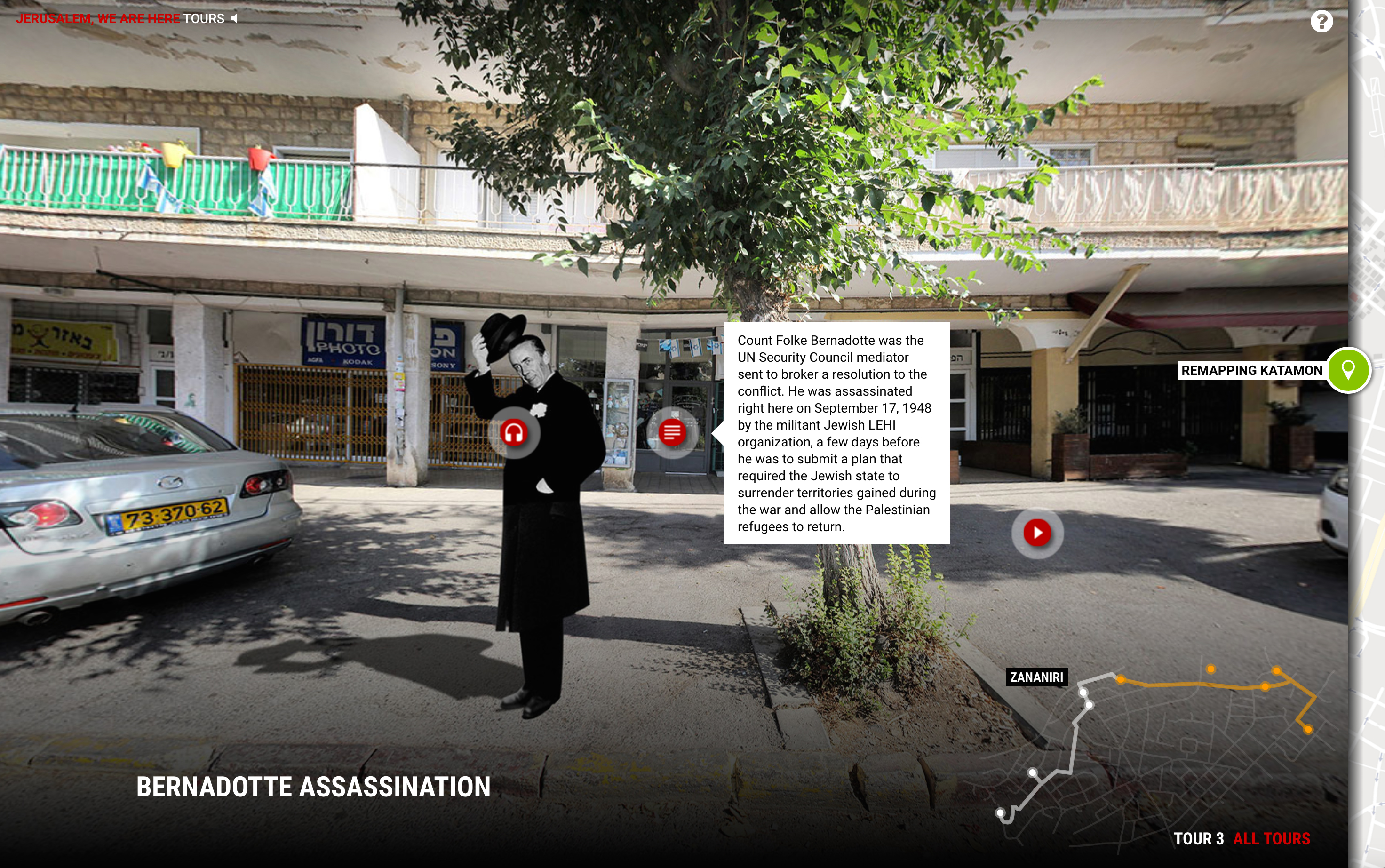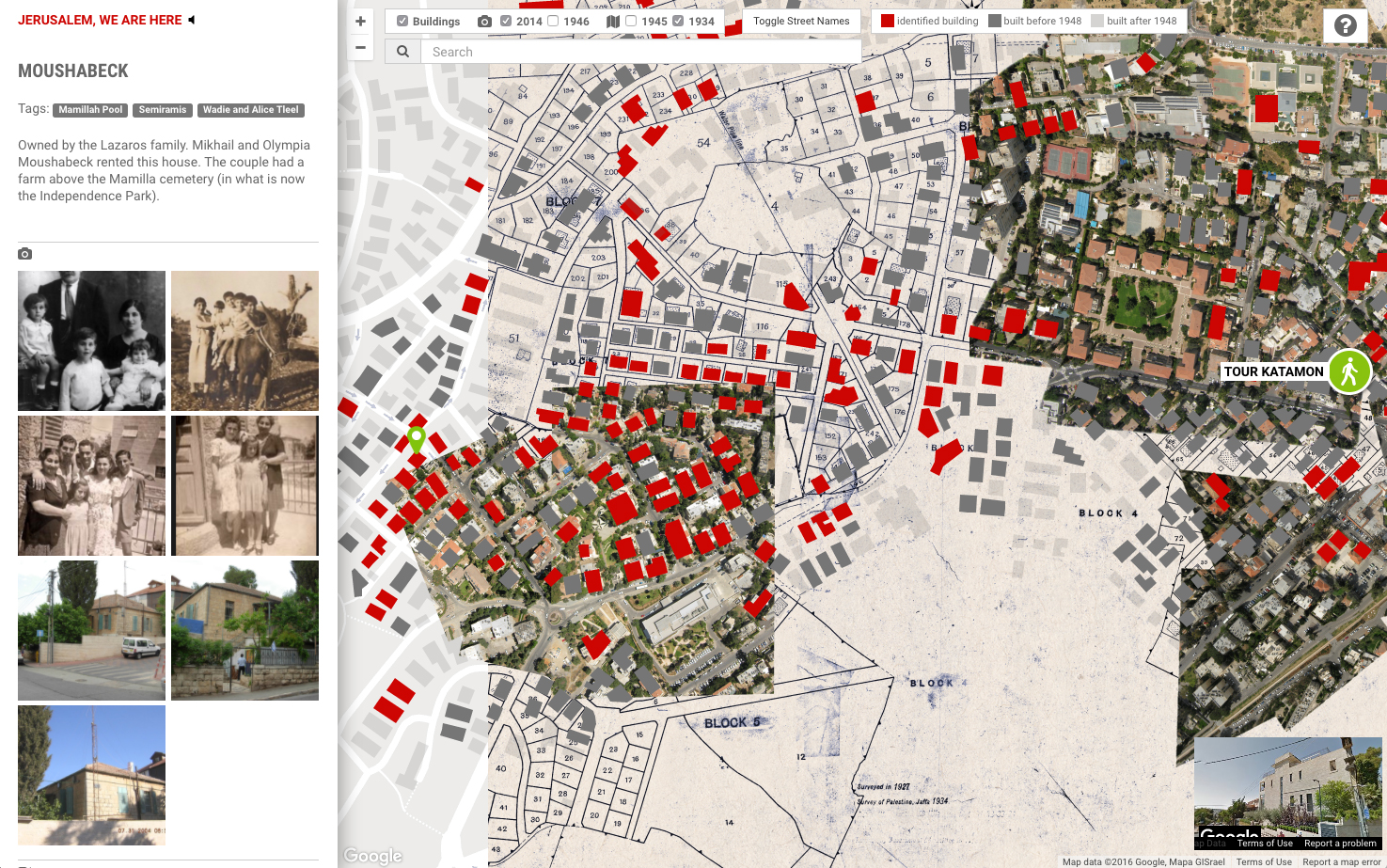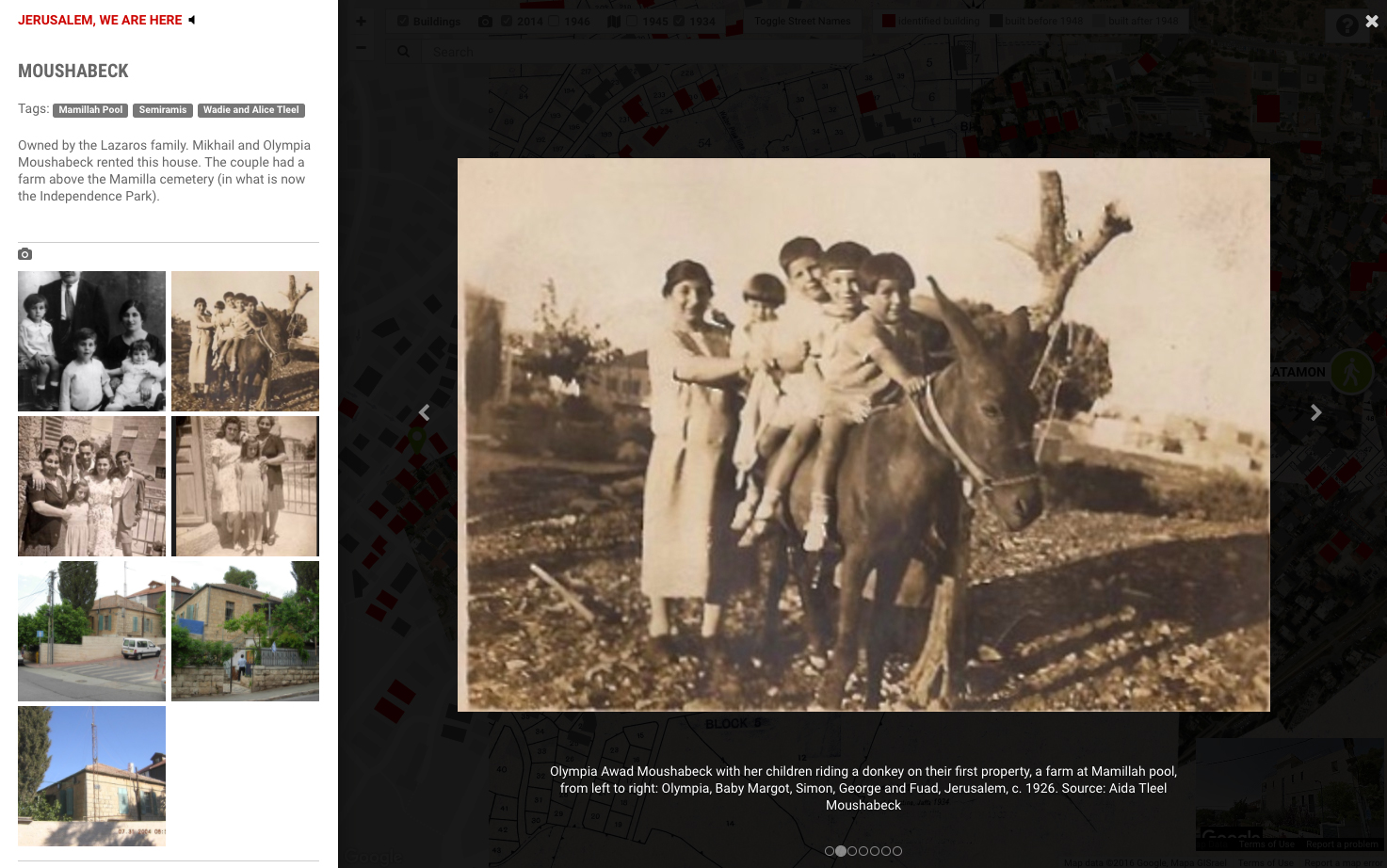Jerusalem, We Are Here is an interactive documentary project that aims to reunite a Palestinian audience with the neighbourhood from which they were expelled in 1948.
Part guided tour, part collective mapping activism, the project is the brainchild of director/producer Dorit Namaan, a film theorist and documentarist from Jerusalem, currently teaching at Queen’s University in Canada, and New York-based producer and curator, Livia Alexander.


‘Until this day, I find it very painful to come back. But now I’m preparing myself, I want to come and visit soon”
– Michael Moushabeck, Massachusetts
At the outset of the project, Dorit showed us a short film she had made of one such Palestinian ex-pat, Michael Moushabek, taking a kind of walking tour on Skype through Jerusalem’s Katamon district from his home in Massachusetts. The tour was an expression of a collective memory of streets and houses built and lived in by his parents, their parents, their families, friends, and peers, all likewise exiles.
Jerusalem, We Are Here is an extension of this one experience, multiplied into so many other stories, woven throughout a depiction of a neighbourhood not gone and not forgotten.
Dorit, along with fellow tour guides Mona Hajjar Halaby and Anwar Ben Badis, take us on a digital walking tour of our own, through the streets and sounds of Katamon. The tours are collage of Google Street Views stitched together with other panoramic imagery, videos, and stills, of far away music, and close up street noise, a tour guide’s voice at one’s side, conversing in Arabic or English about theatres and dances, embassies and monasteries, and the places that people used to call home.

This is Katamon from the twenties to the present, bound together with an interface that allows the audience add their own memories, in a communal effort to re-map Katamon, house by house.
At any point in the tour, one can slide into an overhead view of Katamon where contemporary street maps are combined with meticulously constructed overlays of old municipal survey drawings, post-war aerial photography, and modern day hi-res balloon photography.
Emotive storytelling with maps, and data, and archives is difficult. The human element is often buried by information. But here the visualization of ‘nostalgia, sorrow, and fleeting returns’ is in itself the embodiment of humanity. This project made itself in some ways.
Jerusalem, We Are Here premiered at Montreal’s RIDM film and interactive festival, in November 2016.

